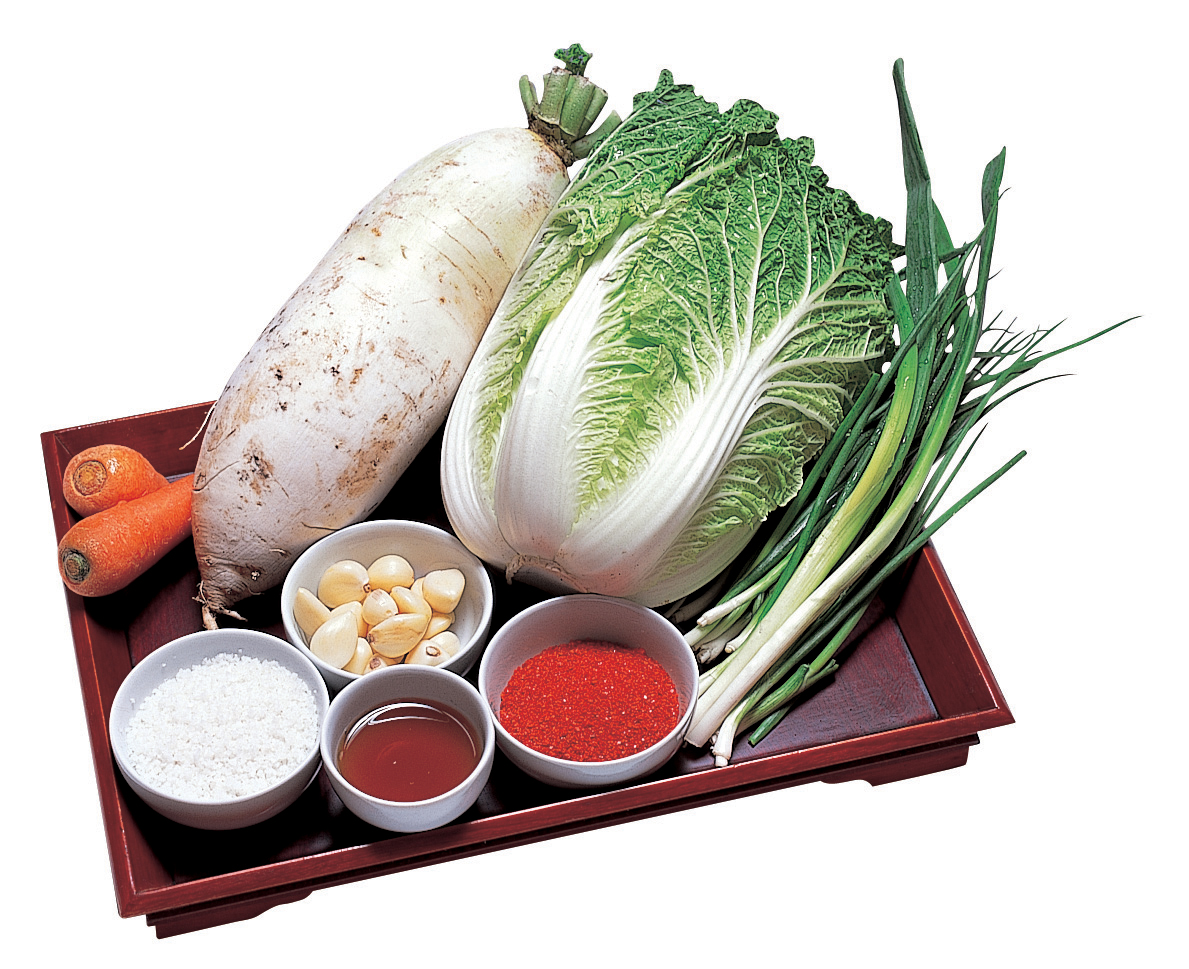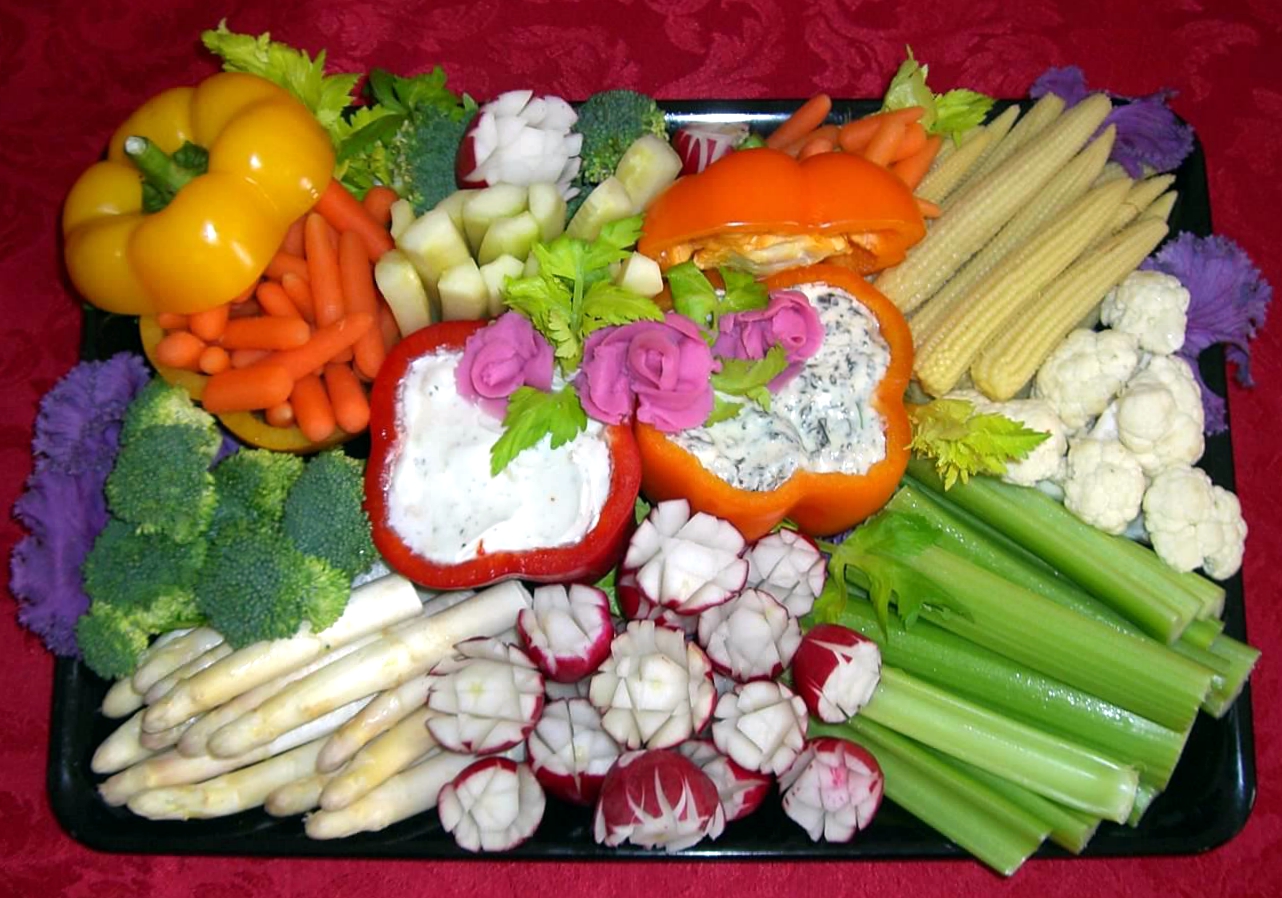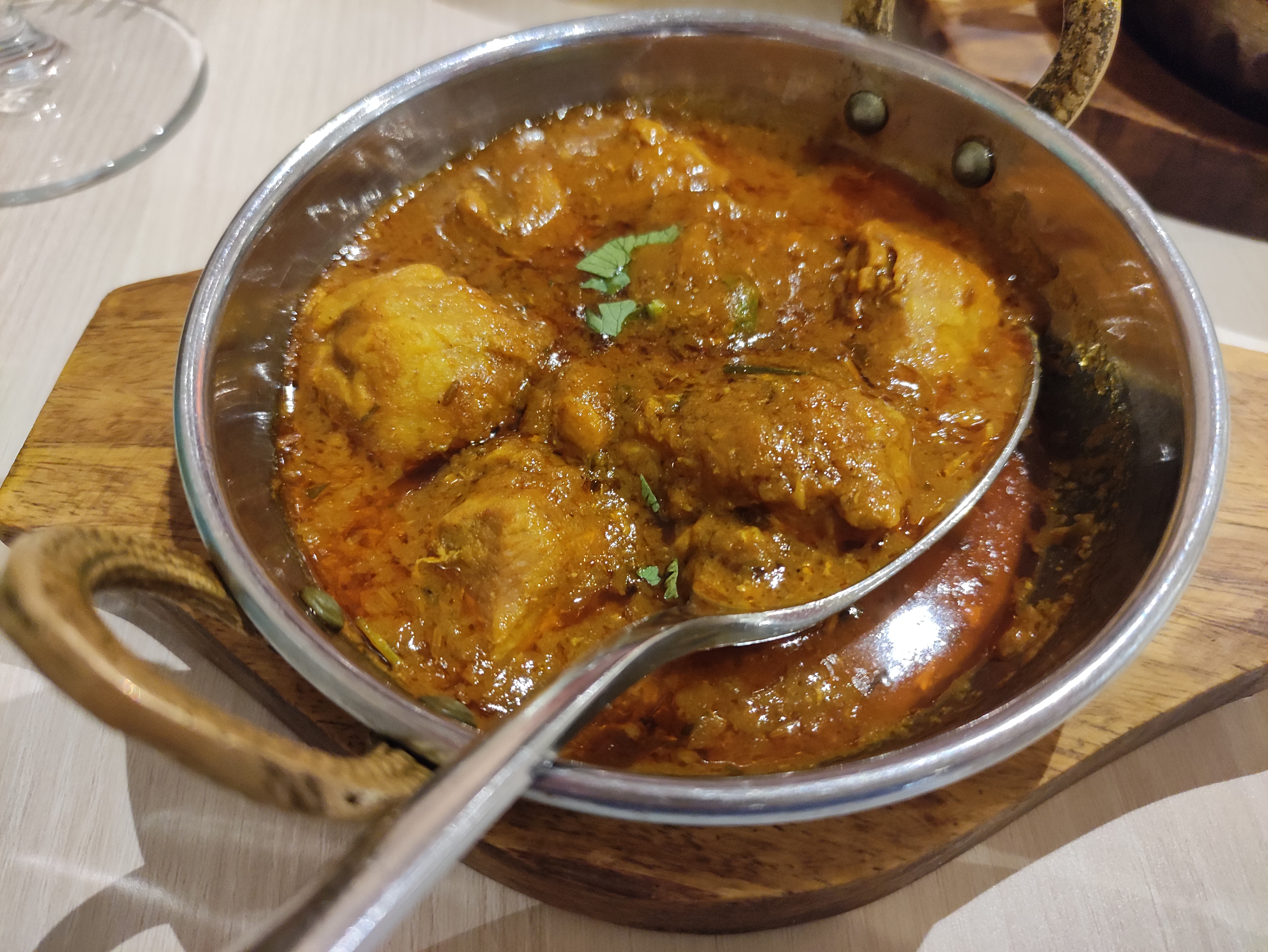|
Apple Soup
Apple soup is a soup prepared using apples as a primary ingredient. The apples can be puréed, sliced, or boiled and used whole. Onions, carrots, parsnip and pumpkin are used in some preparations. Some recipes use chicken or vegetable broth or stock, while some others use water or apple cider. Additional ingredients can be added according to taste, such as cinnamon, lemon juice, sugar, ginger, curry powder, salt and pepper. It is sometimes served as an appetizer. Apple soup has been used as a dish to feed the sick, as occurred circa the early 1900s in the United States. Gallery File:AppleCheddarParsleyTruffleSoup (8301296137).jpg, Apple soup with truffle File:Carrots & apples soup (15239022563).jpg, An apple and carrot soup File:Apple parsnip soup with apple relish.jpg, An apple and parsnip soup topped with apple relish See also * List of soups References Fruit soups Soup Soup is a primarily liquid food, generally served warm or hot – though it is sometimes s ... [...More Info...] [...Related Items...] OR: [Wikipedia] [Google] [Baidu] |
Kimchi
Kimchi (; ) is a traditional Korean side dish (''banchan'') consisting of salted and fermented vegetables, most often napa cabbage or Korean radish. A wide selection of seasonings are used, including '' gochugaru'' (Korean chili powder), spring onions, garlic, ginger, and '' jeotgal'' (salted seafood). Kimchi is also used in a variety of soups and stews. Kimchi is a staple food in Korean cuisine and is eaten as a side dish with almost every Korean meal. There are hundreds of different types of kimchi made with different vegetables as the main ingredients. Examples of variants include ''baechu-kimchi'', ''kkakdugi'', '' chonggak-kimchi'', and '' oi-sobagi''. Traditionally, winter kimchi, called '' gimjang'', was stored in large earthenware fermentation vessels, called '' onggi'', in the ground to prevent freezing during the winter months and to keep it cool enough to slow down the fermentation process during summer months. The process of making kimchi was called gimjan ... [...More Info...] [...Related Items...] OR: [Wikipedia] [Google] [Baidu] |
Purée
A purée (or mash) is cooked food, usually vegetables, fruits or legumes, that has been ground, pressed, blended or sieved to the consistency of a creamy paste or liquid. Purées of specific foods are often known by specific names, e.g., apple sauce or hummus. The term is of French origin, where it meant in Old French (13th century) ''purified'' or ''refined''. Purées overlap with other dishes with similar consistency, such as thick soups, creaming (food), creams (''crèmes'') and gravy, gravies—although these terms often imply more complex recipes and cooking processes. ''Coulis'' (French for "strained") is a similar but broader term, more commonly used for fruit purées. The term is not commonly used for paste-like foods prepared from cereal flours, such as gruel or muesli; nor with oily nut pastes, such as peanut butter. The term "paste" is often used for purées intended to be used as an ingredient, rather than eaten immediately. Purées can be made in a blender, or ... [...More Info...] [...Related Items...] OR: [Wikipedia] [Google] [Baidu] |
List Of Soups
This is a list of notable soups. Soups have been made since ancient times. Some soups are served with large chunks of meat or vegetables left in the liquid, while others are served as a broth. A broth is a flavored liquid usually derived from boiling a type of meat with bone, a spice mix, or a vegetable mix for a period of time in a stock. A potage is a category of thick soups, stews, or porridges, in some of which meat and vegetables are boiled together with water until they form a thick mush. Bisques are heavy cream soups traditionally prepared with shellfish, but can be made with any type of seafood or other base ingredients. Cream soups are dairy based soups. Although they may be consumed on their own, or with a meal, the canned, condensed form of cream soup is sometimes used as a quick sauce in a variety of meat and pasta convenience food dishes, such as casseroles. Similar to bisques, chowders are thick soups usually containing some type of starch. Coulis were ... [...More Info...] [...Related Items...] OR: [Wikipedia] [Google] [Baidu] |
Appetizer
An hors d'oeuvre ( ; ), appetiser, appetizer or starter is a small dish served before a meal in European cuisine. Some hors d'oeuvres are served cold, others hot. Hors d'oeuvres may be served at the dinner table as a part of the meal, or they may be served before seating, such as at a reception or cocktail party. Formerly, hors d'oeuvres were also served between courses.''Oxford English Dictionary'', First Edition, 189''s.v.'' Typically smaller than a main dish, an hors d'oeuvre is often designed to be eaten by hand. Hors d'oeuvre are typically served at parties as a small "snack" before a main course. Etymology in French literally means 'outside the work', that is "not part of the ordinary set of courses in a meal". In practice, it is a dish which stands on its own as a snack or supports the main course. The French spelling is the same for singular and plural usage. In English, the typographic ligature is usually replaced by the digraph and two plural forms are acce ... [...More Info...] [...Related Items...] OR: [Wikipedia] [Google] [Baidu] |
Curry
Curry is a dish with a sauce or gravy seasoned with spices, mainly derived from the interchange of Indian cuisine with European taste in food, starting with the Portuguese, followed by the Dutch and British, and then thoroughly internationalised. Many dishes that would be described as curries in English are found in the native cuisines of countries in Southeast Asia and East Asia. The English word is derived indirectly from some combination of Dravidian words. A first step in the creation of curry was the arrival in India of spicy hot chili peppers, along with other ingredients such as tomatoes and potatoes, part of the Columbian exchange of plants between the Old World and the New World. During the British Raj, Anglo-Indian cuisine developed, leading to Hannah Glasse's 18th century recipe for "currey the India way" in England. Curry was then spread in the 19th century by indentured Indian sugar workers to the Caribbean, and by British traders to Japan. Further exchange ... [...More Info...] [...Related Items...] OR: [Wikipedia] [Google] [Baidu] |
Ginger
Ginger (''Zingiber officinale'') is a flowering plant whose rhizome, ginger root or ginger, is widely used as a spice and a folk medicine. It is an herbaceous perennial that grows annual pseudostems (false stems made of the rolled bases of leaves) about one meter tall, bearing narrow leaf blades. The inflorescences bear flowers having pale yellow petals with purple edges, and arise directly from the rhizome on separate shoot (botany), shoots. Ginger is in the family (taxonomy), family Zingiberaceae, which also includes turmeric (''Curcuma longa''), cardamom (''Elettaria cardamomum''), and galangal. Ginger originated in Maritime Southeast Asia and was likely domesticated first by the Austronesian peoples. It was transported with them throughout the Indo-Pacific during the Austronesian expansion ( Before Present, BP), reaching as far as Hawaii. Ginger is one of the first spices to have been exported from Asia, arriving in Europe with the spice trade, and was used by ancient Gre ... [...More Info...] [...Related Items...] OR: [Wikipedia] [Google] [Baidu] |
Stock (food)
Stock, sometimes called bone broth, is a savory cooking liquid that forms the basis of many dishes particularly soups, stews, and sauces. Making stock involves simmering animal bones, meat, seafood, or vegetables in water or wine, often for an extended period. Mirepoix or other aromatics may be added for more flavor. Preparation Traditionally, stock is made by simmering various ingredients in water. A newer approach is to use a pressure cooker. The ingredients may include some or all of the following: Bones: Beef and chicken bones are most commonly used; fish is also common. The flavor of the stock comes from the bone marrow, cartilage and other connective tissue. Connective tissue contains collagen, which is converted into gelatin that thickens the liquid. Stock made from bones needs to be simmered for long periods; pressure cooking methods shorten the time necessary to extract the flavor from the bones. Meat: Cooked meat still attached to bones is also used as an ... [...More Info...] [...Related Items...] OR: [Wikipedia] [Google] [Baidu] |
Parsnip
The parsnip (''Pastinaca sativa'') is a root vegetable closely related to carrot and parsley, all belonging to the flowering plant family Apiaceae. It is a biennial plant usually grown as an annual. Its long taproot has cream-colored skin and flesh, and, left in the ground to mature, becomes sweeter in flavor after winter frosts. In its first growing season, the plant has a rosette of pinnate, mid-green leaves. If unharvested, it produces a flowering stem topped by an umbel of small yellow flowers in its second growing season, later producing pale brown, flat, winged seeds. By this time, the stem has become woody, and the taproot inedible. Precautions should be taken when handling the stems and foliage, as parsnip sap can cause a skin rash or even blindness if exposed to sunlight after handling. The parsnip is native to Eurasia; it has been used as a vegetable since antiquity and was cultivated by the Romans, although some confusion exists between parsnips and carrots i ... [...More Info...] [...Related Items...] OR: [Wikipedia] [Google] [Baidu] |
Apple
An apple is a round, edible fruit produced by an apple tree (''Malus'' spp.). Fruit trees of the orchard or domestic apple (''Malus domestica''), the most widely grown in the genus, are agriculture, cultivated worldwide. The tree originated in Central Asia, where its wild ancestor, ''Malus sieversii'', is still found. Apples have been grown for thousands of years in Eurasia before they were introduced to North America by European colonization of the Americas, European colonists. Apples have cultural significance in many mythological, mythologies (including Norse mythology, Norse and Greek mythology, Greek) and religions (such as Christianity in Europe). Apples grown from seeds tend to be very different from those of their parents, and the resultant fruit frequently lacks desired characteristics. For commercial purposes, including botanical evaluation, apple cultivars are propagated by clonal grafting onto rootstocks. Apple trees grown without rootstocks tend to be larger and ... [...More Info...] [...Related Items...] OR: [Wikipedia] [Google] [Baidu] |
Tofu
or bean curd is a food prepared by Coagulation (milk), coagulating soy milk and then pressing the resulting curds into solid white blocks of varying softness: ''silken'', ''soft'', ''firm'', and ''extra (or super) firm''. It originated in China and has been consumed in the country for over 2,000 years. Tofu is a traditional component of many East Asian cuisine, East Asian and Southeast Asian cuisine, Southeast Asian cuisines; in modern Western cooking, it is often used as a Meat alternative, meat substitute. Nutritionally, tofu is low in calories, while containing a relatively large amount of protein. It is a high and reliable source of iron, and can have a high calcium or magnesium content depending on the Flocculation, coagulants (e.g. calcium chloride, calcium sulphate, magnesium sulphate) used in manufacturing. Cultivation of tofu, as a protein-rich food source, has one of the lowest needs for land use (1.3 m²/ 1000 kcal) and emits some of the lowest amount of greenhouse ... [...More Info...] [...Related Items...] OR: [Wikipedia] [Google] [Baidu] |
Apple Cider
Apple cider (also called sweet cider, soft cider, or simply cider) is the name used in the United States and Canada for an unfiltered, unsweetened, non-alcoholic beverage made from apples. Though typically referred to simply as "cider" in North America, it is not to be confused with the alcoholic beverage known as cider in other places, which is called "hard cider" in the US. Outside of the United States and Canada, it is commonly referred to as cloudy apple juice to distinguish it from clearer, filtered apple juice and hard cider. Fresh liquid cider is extracted from the whole apple itself, including the apple core, trimmings from apples, and oddly sized or shaped “imperfect” apples, or apple culls. Fresh cider is opaque due to fine apple particles in suspension and generally tangier than commercially cooked and filtered apple juice, but this depends somewhat on the variety of apples used. Cider is sometimes pasteurization, pasteurized or exposed to UV light to kill bacteri ... [...More Info...] [...Related Items...] OR: [Wikipedia] [Google] [Baidu] |
Broth
Broth, also known as bouillon (), is a savory liquid made of water in which meat, fish, or vegetables have been simmered for a short period of time. It can be eaten alone, but it is most commonly used to prepare other dishes, such as soups, gravies, and sauces. Commercially prepared liquid broths are available, typically chicken, beef, fish, and vegetable varieties. Dehydrated broth in the form of bouillon cubes was commercialized beginning in the early 20th century. Stock versus broth Many cooks and food writers use the terms ''broth'' and ''stock'' interchangeably. In 1974, James Beard (an American cook) wrote that stock, broth, and bouillon "are all the same thing". While many draw a distinction between stock and broth, the details of the distinction often differ. One possibility is that stocks are made primarily from animal bones, as opposed to meat, and therefore contain more gelatin, giving them a thicker texture. Another distinction that is sometimes made i ... [...More Info...] [...Related Items...] OR: [Wikipedia] [Google] [Baidu] |









